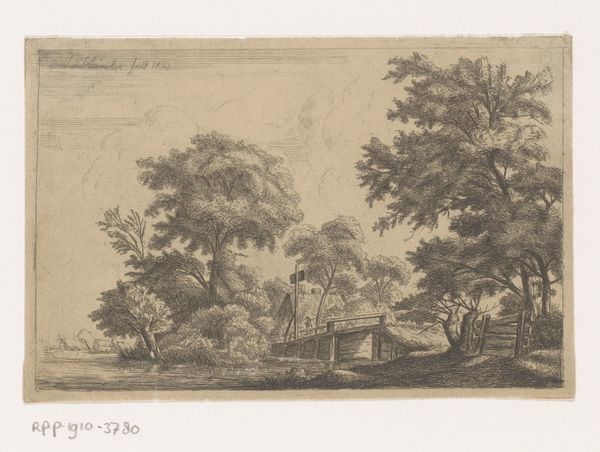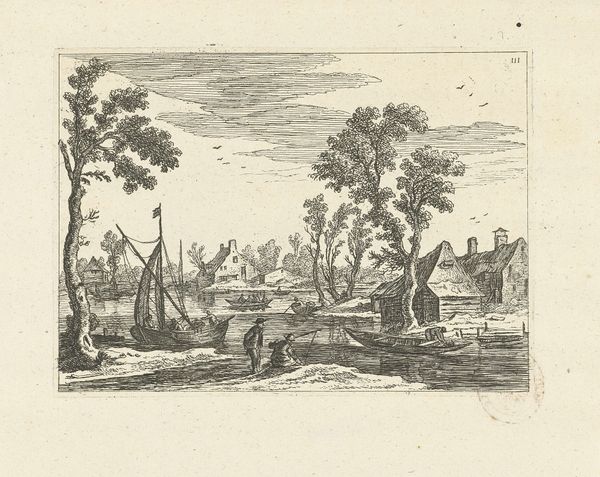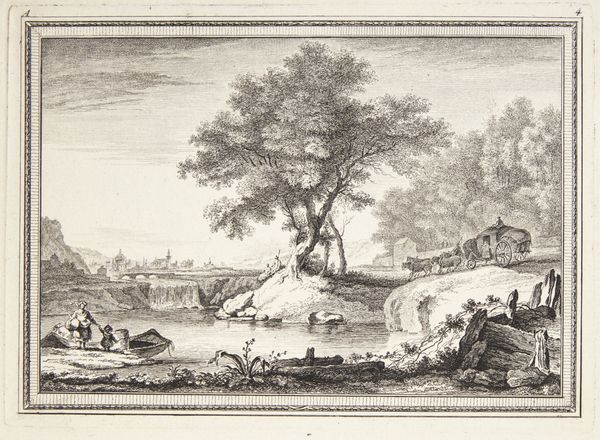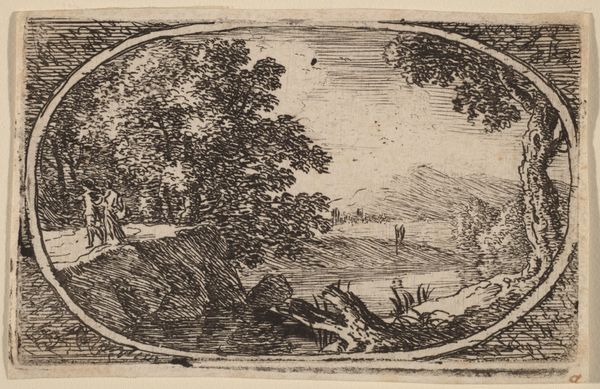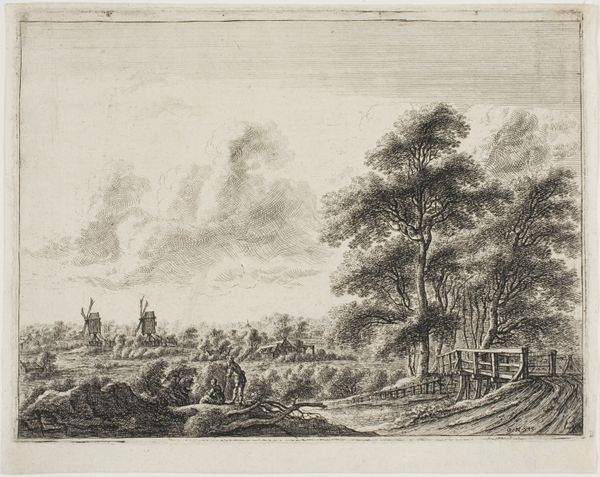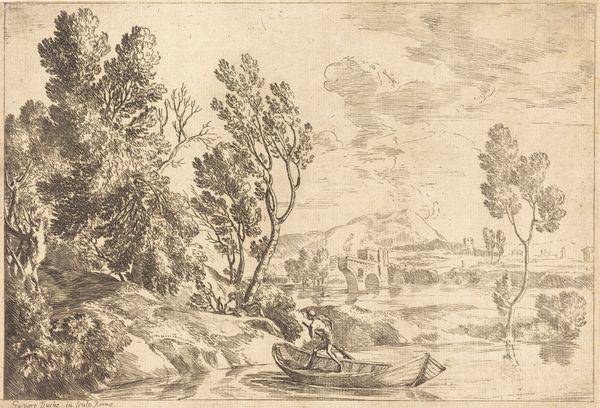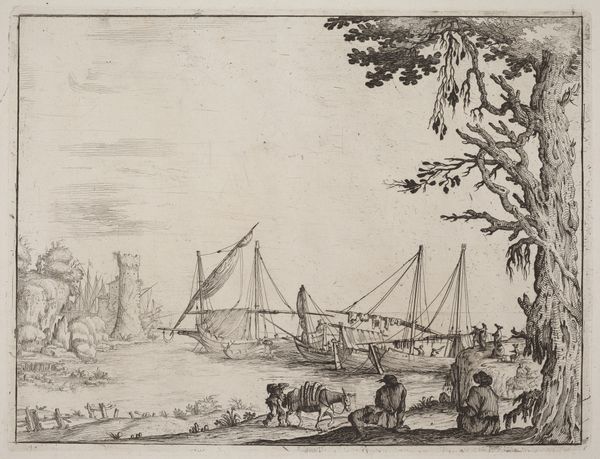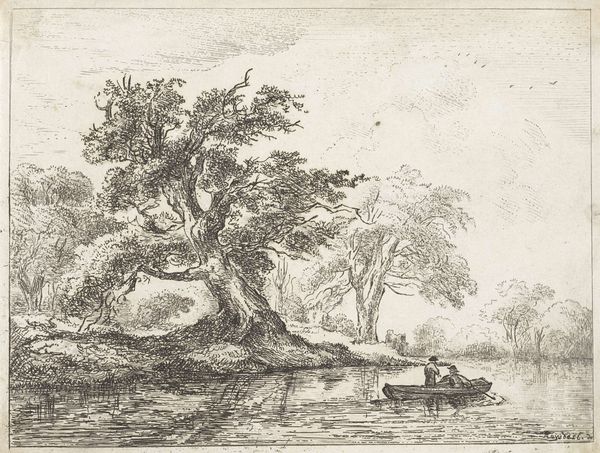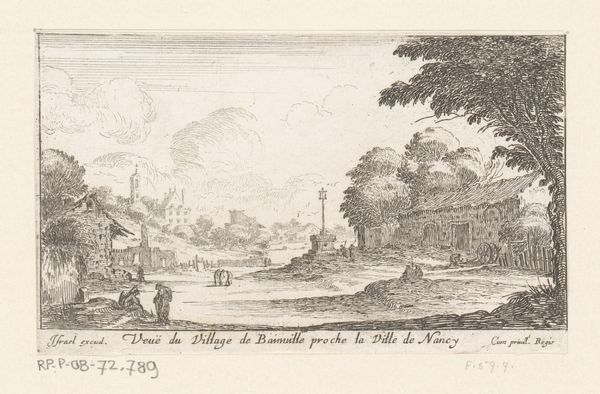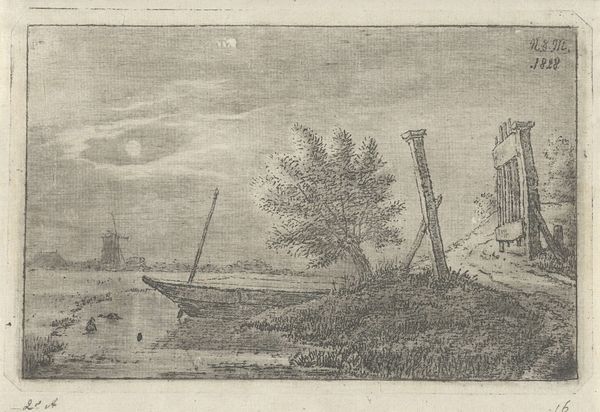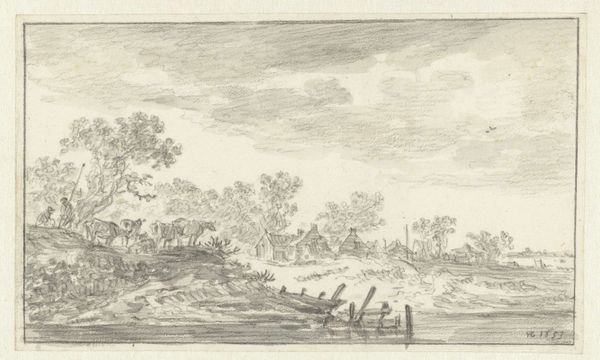
Udsigt over en lille havn, i forgrunden en lastet båd 1750 - 1795
0:00
0:00
print, etching
# print
#
etching
#
landscape
#
cityscape
#
realism
Dimensions: 159 mm (height) x 211 mm (width) (plademål)
Curator: Looking at this etching, “Udsigt over en lille havn, i forgrunden en lastet båd” – that's “View of a Small Harbour, with a Loaded Boat in the Foreground" – created sometime between 1750 and 1795, we're viewing a work by Jeanne Françoise Ozanne, a name perhaps not as widely recognised but important nonetheless in understanding the artistic landscape of her time. Editor: The etching work is undeniably skillful, but I’m immediately struck by the calm atmosphere it exudes. It feels like a captured memory of a tranquil harbour scene with everyday people loading goods. The black and white emphasizes the linear qualities of the image, while the details of the architecture evoke stability and peace. Curator: I agree. Consider how gendered spaces and activities become visible in these apparently “neutral” scenes. Women are primarily seen near the boats, perhaps indicative of their economic roles in waterfront commerce and how women negotiate social life in busy maritime districts. It asks questions about accessibility and who controls that particular economic sphere. Editor: You bring up an important element. Symbols matter a lot here: the boats represent journeys, trade and connection. The positioning of figures near the water signals passage into different realities – from land to water. It's an intersection of work and transition – very significant. Curator: Indeed. There’s also something quietly subversive about placing such emphasis on what would have been considered a mundane, workaday scene. It resists the era's common habit of romanticizing more extravagant elements of life in portraits and landscapes, presenting a form of grounded social commentary by highlighting an economic setting with little fanfare or grandiosity. Editor: The technique of etching, with its delicate line work, further emphasizes the human element. Every person and their clothing feels carefully depicted – not just implied or vaguely representative, and that contributes to that feeling of intimate recognition and connection. Curator: And while we have only scratched the surface of what a contemporary study may glean, even such a brief investigation suggests the wealth of social data embedded in what, at first glance, might appear merely a pleasing visual tableau of a harbor. Editor: Absolutely. I found new aspects through your perspective too, that initial impression shifted to acknowledge layered narrative with the cultural value placed within. Thank you for drawing the threads in Jeanne Françoise Ozanne's captivating viewport and the lives etched here.
Comments
No comments
Be the first to comment and join the conversation on the ultimate creative platform.
